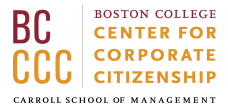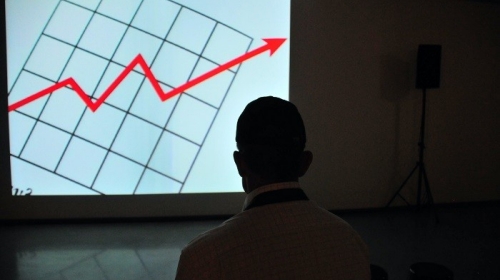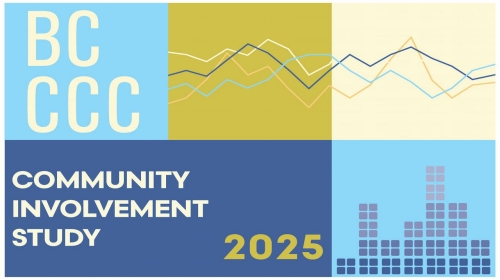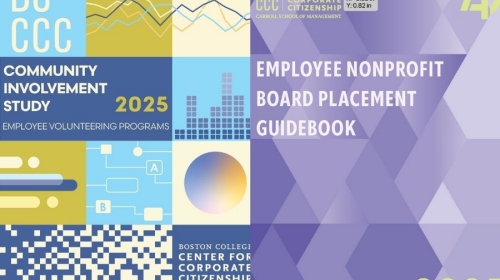WEBINAR: This webinar explores how to measure and communicate your organization's social impact with proven frameworks and strategies that matter to stakeholders.
Companies Fighting Food Insecurity and Tackling Food Waste

There’s a famine happening right now in Sudan, South Sudan, and Mali. The food insecurity situation in Gaza is catastrophic. Millions in Haiti face acute food insecurity. Even here in the United States—where the challenge is less about extreme, widespread hunger—food shortages and undernutrition still manifest in serious ways.
The U.S. is the wealthiest country among the Group of Seven (G7) nations, and yet every year—for the past 14 years—the U.S. has housed the group’s largest percentage of residents who say they struggle to afford meals. In 2023, more than one in four Americans (26%) reported not having enough money to buy food at least once in the past twelve months. The problem is bigger than an empty plate.
Research suggests food insecurity may be associated with higher rates of anxiety or depression. In children, especially, longitudinal data indicate that hunger jeopardizes young students’ ability to succeed in school. Researchers have also identified a paradoxical link between food insecurity and obesity in women, particularly in developed economies like the U.S. So, even in places where hunger crises are perhaps less visible, major public health challenges—like type 2 diabetes, cardiovascular diseases, metabolic syndrome, hypertension, certain types of cancer, and children’s behavioral health—may still be attributed to a lack of proper nutrition.
If your company is committed to tackling food insecurity in the U.S. or abroad, the following information and program examples may prove helpful. Continue reading for a primer on drivers of food insecurity and disparities. Or skip ahead to read how companies like Toast, Deli Star, and Machias Savings Bank are developing innovative, multi-faceted solutions to combat hunger—today and tomorrow.

What are some key stats about food insecurity and food waste?
- In 2022, nearly 13% of all households in the U.S. were considered food-insecure.
- In 2022, 2.4 billion people globally experienced moderate or severe food insecurity.
- In 2022, the world wasted 1.05 billion tons of food.
- In the U.S., more than 90 billion pounds of food (enough for 145 billion meals) gets wasted every year.
- Food insecurity is on the rise, in the U.S. and globally.
- According to the USDA, upwards of 10 million more people (including 4 million more children) experienced food insecurity in 2022 as compared to 2021.
- The U.N,’s second Sustainable Development Goal (SDG-2) is Zero Hunger; SDG 12.3 focuses on halving global food waste.
What is the definition of food security and food insecurity?
As defined at the World Food Summit in 1996, food security is a state in which “all individuals, always, have physical, social, and economic access to sufficient, safe, and nutritious food to meet their dietary needs and food preferences for an active and healthy life.”
Conversely, food insecurity is about limited or uncertain access to food (i.e., not knowing where a person’s next meal might come from).
For the purposes of analyzing and addressing the problem, food insecurity can be broken down into subcategories like “acute food insecurity” (a right-now situation wherein the lack of food is causing immediate danger) and “chronic food insecurity” (a long-term problem, usually caused by systemic challenges that need to be explored).
Globally, governments and non-governmental organizations (NGOs) rely on a one-to-five scale to determine the severity of acute food insecurity situations, and to make decisions about emergency response efforts. The scale is known as the IPC Classification System. A “one” rating equals minimal food insecurity concerns. A “five” rating represents famine or catastrophic food insecurity conditions.
In the U.S., organizations most often work from the Department of Agriculture’s definition (i.e., having enough food to maintain a healthy, active lifestyle) or from its food insecurity ranges. The USDA’s current spectrum spans from “high food security” (zero problems or limitations when accessing food) to “very low food security” (multiple indications of disrupted eating patterns and reduced food intake).
In areas where food insecurity is at emergency levels, supplying necessary aid is the first and foremost concern. But tackling food insecurity isn’t just about ensuring a sufficient quantity or frequency of meals. According to Feeding America, thousands of Americans may not meet traditional food insecurity definitions, and yet still require help from charitable food organizations. That’s because having access to healthy food is also a key part of the equation, as is access to a diverse diet.
What are the factors driving food insecurity in the U.S. and around the world?
According to the World Bank Group, food security and insecurity are defined by four major pillars: availability, access, utilization, and stability.
Availability is pretty simple: Is the world making enough food to feed all its people? Challenges to availability may be caused or exacerbated by environmental change (e.g., drought, extreme heat or cold), which limits available supply and raises costs. Global conflicts and trade restrictions can further hamper supply chains.
Access is more nuanced. Just because the U.S. grows millions of pounds of apples every year doesn’t mean that fresh apples will reliably land on every kitchen table in America. More questions emerge: Which households can afford to buy the apples? Which zip codes and neighborhoods maintain markets where apples are sold? Can most folks in the community walk, bike, or ride to said markets safely and economically? The answer, unfortunately, is sometimes no, which means that fighting food insecurity is about more than just supporting adequate food production.
Utilization is also a trickier variable to measure and define. Essentially, it’s about how households prepare, share, and pair foods for the sake of personal nutrition and energy. For example, some parents may need to water down milk in order to make it stretch farther. When there’s not enough to go around, maybe it’s only the breadwinner who is getting to consume the majority of the nutrition. Additionally, diversity in diet plays a role. Some foods—like bread, rice, or fast food—may be smart economic choices, but less than advisable as the whole of one’s diet.
Stability represents all of the above, in terms of thinking beyond just today. Fighting food insecurity by way of improving stability could take the form of supporting more climate-conscious agriculture or irrigation initiatives for a more overall resilient supply chain. It might also mean investing in programs that combat some of the problem’s socially-based causes: unemployment, underemployment, lack of affordable housing, or discrimination against those in marginalized communities.

Understanding food (in)security disparities
Food insecurity is a worldwide issue, but its threats do not affect all areas equally. The Global Alliance for Food Security (GAFS) maintains a food and nutrition security dashboard that illustrates security levels by country. The map color-codes areas where the food situation is currently “stressed,” in crisis, reaching emergency status, or virtually nonexistent (at the level of famine). Armed conflicts, political instability, climate change, extreme weather, entrenched poverty: where these stressors exist, food insecurity tends to follow.
Here in the U.S., Feeding America also maintains an interactive map illustrating food insecurity among the overall population. The reasons why higher levels of food insecurity may be more concentrated in specific U.S. geographies are varied and complex. In communities where most folks live at or below the poverty line, food insecurity tends to be higher. In places where the increased cost of living is rapidly outpacing wage growth, or where housing costs are skyrocketing, food insecurity is also on the rise. Poorer communities tend to have fewer grocery stores (along with fewer healthcare facilities, fewer parks, and subpar transportation infrastructure), which means the food in these areas is often more expensive and less conducive to establishing a diverse, healthy diet.
A history of racism and discrimination—limited economic opportunities, education, housing, and lending on the basis of race—also continues to play a key role. In the U.S. alone, the USDA identified 6,500 so-called “food deserts”—areas where residents have limited access to healthy, affordable food. In all but the densest of urban areas, neighborhoods with a higher percentage of minority populations are more likely to be food deserts.

Why should companies play a role in fighting food insecurity?
A growing body of research vetted and curated by BCCCC indicates that corporate social responsibility (CSR) efforts can deliver significant value both for companies and for society. This is especially true when the CSR efforts are well aligned with the company’s industry. In other words, doing the right thing isn’t just a moral victory; it’s also profitable.
World leaders recognize this win-win potential, too. “Enhancing the role of the private sector” was the number two recommendation listed in a 2023 joint statement issued by the heads of the Food and Agriculture Organization, International Monetary Fund, World Bank Group, as necessary to preventing a prolonged food insecurity crisis.
Below, we’ve highlighted the programs and perspectives of three BCCCC member companies that are leveraging people, products, and philanthropic funding to drive positive change. Read what they’re doing to promote food security, mitigate food waste, and achieve other climate-healthy outcomes in the process.
COMPANY SPOTLIGHTS: Addressing the four pillars of food security
Deli Star’s community and sustainability programs strive to address all four of the World Food Bank Group’s pillars (availability, access, utilization, stability). “Creating a just food system requires us to recognize the circularity of food processing,” shares Emily Zevely, Director of Community Impact at Deli Star.
So far in 2024, Deli Star has donated over 180,000 pounds of protein to the St. Louis Area Foodbank, which then distributes to over one hundred partner agencies across Missouri and Illinois. Their focus on resilient, sustainable communities means honoring all the people involved and resources borrowed in food production. Some of the company’s key objectives include:
- Donating at least 1% of the protein it produces
- Respecting and honoring each person—farmers, production workers, food service workers, and employees—to uphold best practices for safety, health, and wellness as part of its pursuit of its Living Wage certification
- Setting a goal to reduce food-loss-to-landfill to under 1% of total pounds produced
- Acting as “true neighbors,” supporting employee volunteerism, advocating for food justice, and taking action on issues employees care about
- Working with supply chain and farm partners to better support land, animals, and people
Employee volunteers and corporate giving to fight food insecurity
For Machias Savings Bank, tackling food insecurity is a year-round effort—and a team-wide commitment.
“Our purpose is to help create thriving communities,” offers Melissa Moffett Denbow, SVP, Community Experience Manager at Machias Savings Bank. “No one wants to see anyone go hungry. Helping those in need is at the heart of our culture, and our employees are a driving factor in this work.”
Every fall, Machias hosts an annual food drive, with different branches collecting nonperishable food items to donate. Knowing that many kids secure the bulk of their balanced meals at school, the bank also focuses on providing meals through the school vacation months, working with local organizations to offer donations and volunteer support. The bank provides a monetary donation to food-based NGOs during the holiday season. Outside of the bank-wide campaign, Machias associates support local food pantries with annual donations. In honor of employees who offer more than 40 hours of volunteering, Machias sends a check to the respective community group through its Dollars for Doers program.

Over at Toast, employee engagement around food security is equally high. Toasters (Toast employees, pictured right) kick off Hunger Action Month by observing National Food Bank Day on the first Friday of September. The company encourages its Toasters to volunteer at their local food banks.
During its annual “Season of Giving” program every November, Toast mobilizes hundreds of employees through 60+ Toast.org chapters across the U.S. and internationally. These Toasters volunteer with local organizations fighting hunger and increasing access to healthy, nutritious food. For every hour volunteered, Toast.org provides $10 in volunteer rewards which employees are invited to donate to an eligible cause of their choice. The company also deploys philanthropic capital into the community through its Hometown Grants—a program that lets employees nominate and vote for local hunger-fighting organizations. In 2023, Toast provided a total of $500,000 in grants (ranging from $1,000 to $20,000) to over one hundred organizations.
“During Season of Giving, we also partner with our sales team on a referral program supporting No Kid Hungry, a national campaign run by Share Our Strength addressing childhood hunger across the U.S.,” adds Shana Soltani, Senior Manager, Toast.org Philanthropy & Partnerships. “For every new customer who signs up for Toast during the campaign, Toast makes a $10 donation to No Kid Hungry. Since establishing this partnership, we’ve donated $225,000 which can help provide 2.25 million meals to kids.”
Tackling food insecurity by addressing food waste
There is enough food produced globally to feed the entire population, yet millions still face hunger. Why? Leaders at Machias Savings Bank, Deli Star, and Toast chalk it up to inefficiencies and other challenges at nearly every stage of the food supply chain. Companies pitching in to help fix these problems makes sense on a number of fronts. The work provides environmental benefits in addition to scoring social impact wins and good business practices.
“We’re connecting the dots between food waste and food insecurity by working with nonprofits [who are] spearheading initiatives to help gather excess food available,” says Denbow. “From small farms donating their extra fruits and vegetables through gleaning projects, supporting local food banks that gather food from the grocery stores that would be discarded, to creating awareness of the needs of the community through social media.”
Similarly, Toast has supported nonprofit organizations tackling the dual issues of food waste and hunger through its Toast.org Impact Grants. For example: Rethink Food in NYC expertly converts excess food into nutritious, quality meals for community members facing food insecurity. Farming Hope in San Francisco takes action by recovering imperfect surplus foods from going to waste and nourishing those who need it most in their communities. DC Central Kitchen transforms 3,000 pounds of otherwise wasted food into 16,000 healthy meals for their community every day. And Food Recovery Network unites 8,000+ college students, food suppliers, farmers, and local businesses across the U.S. in the fight against climate change and hunger by recovering surplus food from across the supply chain and donating it to local nonprofit organizations that feed people experiencing hunger.
“Our employees tell us time and again that the issue of food waste and food loss is what they care most about,” agrees Zevely. “[They] have continued to be the best champions toward these reductions.”
Deli Star recently began a composting program to divert excess product that was previously going to landfills. To help track reduction metrics, the team conducted a baseline greenhouse gas emissions study and a waste audit. It now tracks food loss, as well as food donations, on a monthly basis.
“We recognize that food waste is a significant contributor to climate change through the emission of dangerous greenhouse gasses,” adds Toast’s Soltani. “The methane produced by food waste diverted to landfills is particularly harmful, and restaurants produce a meaningful proportion of this waste. Second, we know we support an industry with notoriously slim profit margins—restaurants are always looking for ways to manage their costs. Reducing food waste is a critical tool for restaurant owners/operators when it comes to optimizing their operations.”

Innovation in fighting food insecurity
Last year the Toast.org product team developed and launched the Food Waste Reduction product suite, available for free to all Toast customers. “In those final months of 2023, we saw 1,700+ active restaurants using the Food Waste Reduction tracker to log over $4M in lost retail value from food waste,” says Soltani.
In November 2023, Toast announced a $1M, two-year partnership with ReFED, serving as the anchor funder for the second open call of the ReFED Catalytic Grant Fund, which provides grants to organizations seeking high-impact solutions to food waste across the food system. “These solutions span the spectrum of food waste solutions, including prevention (increasing visibility into food waste, stopping food waste from occurring in the first place, or transforming it into new edible products); recovery (redistributing edible, excess food to people); and recycling (repurposing waste as energy, agricultural animal feed, non-edible byproducts, etc.),” Soltani shares.
As a leader in restaurant tech, Toast is also using its business resources to partner with Food Rescue US (one of the six ReFED Catalytic Grant Fund grantees), to pilot an integration of Food Rescue’s donation technology with Toast’s own point of sale (POS) system.
The goal of this collaboration is to enable Toast customers to seamlessly donate food marked as excess by pushing it to the Food Rescue US platform, where it can be routed to a local volunteer for pick up, and delivered to a local agency serving the food insecure. “If this pilot is successful, we hope to see a future where many food rescue organizations operating nationally or in local communities can easily plug into the Toast POS, making it as easy and frictionless as possible for the 120,000+ restaurants using Toast to donate excess food to local neighbors facing hunger.”
Nonprofit partners to help build food security: Who, when, and why?
When fighting food insecurity, finding the right community partners often means tapping into insights businesses might not otherwise have.
“Our nonprofit partners indicate that the items consistently in need are produce and protein,” explains Deli Star’s Zevely. “So not only are we helping to close the food gap, we’re also [working on] closing the nutrition gap.”
Toast looks for partners that are aligned with its main focus areas, bringing deep domain expertise, demonstrating community impact, and holding close proximity to the stakeholders who ultimately benefit from their programs. But the company’s approach can vary, depending on the nature of the partnership and goals of the program.
“For the Hometown Grants program during our Season of Giving,” Soltani offers, as one example, “our top priority is funding organizations that are recommended by employees, typically because they are already engaged as donors or volunteers. For these types of smaller donations and grants, we rely primarily on the vetting services provided by our employee giving and volunteering platform, Benevity.”
For larger grants and partnerships, the company employs a more comprehensive screening process, looking at factors such as organizational leadership and financials, DEI practices, employee engagement opportunities, relevance to the restaurant industry, and more. “We also work collaboratively with any potential partners to ensure our goals are clearly aligned, and responsibilities of each party are defined. Our Toast.org Executive Committee, composed of select C-suite executives including our CEO, are engaged in the decision-making process as well,” says Soltani.
At Machias, the partner selection process takes on many of the same elements. Through networking, employee volunteerism, and direct asks for support. Denbow says her team also looks to local authorities. “We attend the Maine Food Funders who are helping to address and create awareness of the needs and projects across the state.”
Getting stakeholders involved in the fight against food insecurity
“At Deli Star, we take feedback seriously,” shares Zevely. “For four years now, we have conducted our Partner Equity Score survey, where we ask everyone—from employees, to customers, to suppliers, to community partners—how we are doing.” That feedback, which continually highlights food waste as a stakeholder priority, has a clear place in Deli Star’s purpose: to discover new and better ways of producing health, happiness, and the joy of food.
In addition to leveraging its own philanthropic resources to support hunger-fighting orgs, Toast says it equips customers and their guests to contribute through Toast Fundraising, a free feature that allows Toast restaurants to set up a fundraising campaign for the cause of their choice. Guests at participating restaurants can round up their check or provide a flat donation to support the campaign.
As of July 2024, Toast restaurants have raised over $200,000 for organizations supporting hunger relief in their communities, with contributions from over 300,000 guests.
Looking for examples of companies in your industry that are supporting nonprofits or using innovation to fight food insecurity? Ask our research team for details!
Free knowledge requests like this are just one key benefit of BCCCC membership. If your company isn’t a member of the Center yet, we should fix that.
Related Content
RESEARCH BRIEF - Researchers investigated how ESG activities help or hurt financial performance, using nine years of data from over 1,200 global companies.
RESEARCH BRIEF - Researchers analyzed 4 US energy exchange-traded funds (ETFs) over 15 years, including 2 dirty energy funds tracking fossil fuel companies and 2 clean energy funds tracking renewable energy companies.
RESEARCH BRIEF - Researchers conducted a survey, which measured perceptions of CSR and ethical leadership within the manufacturing and service industries.
WEBINAR: This webinar explores how corporate giving will be reshaped by the One Big Beautiful Bill. Hear directly from corporate citizenship leaders as they share innovative, real-world strategies that deliver impact for communities and results for business.
This study explores shifting trends in employee volunteering, corporate giving, and other means of corporate community involvement.
This guidebook offers insights on placing employees in nonprofit board service roles.
This study explores shifting trends in employee volunteering, corporate giving, and other means of corporate community involvement.









